Dynamic Tension Deformation of Rare-Earth Containing Mg-1.9Mn-0.3Ce Alloy Sheet along the Rolling Direction at Various Temperatures
Abstract
1. Introduction
2. Materials and Methods
3. Results and Discussion
3.1. Tensile Behavior at Various Strain Rates and Temperatures
3.2. Deformation Mechanism and Fracture Behavior
4. Conclusions
Author Contributions
Funding
Conflicts of Interest
References
- Yan, Y.; Deng, W.P.; Gao, Z.F.; Zhu, J.; Wang, Z.J.; Li, X.W. Coupled Influence of Temperature and Strain Rate on Tensile Deformation Characteristics of Hot-Extruded AZ31 Magnesium Alloy. Acta Met. Sin. Engl. Lett. 2016, 29, 163–172. [Google Scholar] [CrossRef][Green Version]
- Bae, S.W.; Kim, S.H.; Lee, J.U.; Jo, W.K.; Hong, W.H.; Kim, W.; Park, S.H. Improvement of mechanical properties and reduction of yield asymmetry of extruded Mg-Al-Zn alloy through Sn addition. J. Alloys Compd. 2018, 766, 748–758. [Google Scholar] [CrossRef]
- Wei, J.; Wang, G.; Ji, X.; Deng, K.; Sha, F. Dynamic mechanical properties and constitutive relationship of particle-reinforced AZ91D composites. J. Alloys Compd. 2018, 767, 210–214. [Google Scholar] [CrossRef]
- Singh, J.; Kim, M.S.; Lee, J.H.; Guim, H.; Choi, S. Microstructure evolution and deformation behaviors of E-form and AZ31 Mg alloys during ex-situ mini-V-bending tests. J. Alloys Compd. 2019, 778, 124–133. [Google Scholar] [CrossRef]
- Monetta, T.; Parnian, P.; Acquesta, A. Recent Advances in the Control of the Degradation Rate of PEO Treated Magnesium and Its Alloys for Biomedical Applications. Metals 2020, 10, 907. [Google Scholar] [CrossRef]
- Bohlen, J.; Nürnberg, M.R.; Senn, J.W.; Letzig, D.; Agnew, S.R. The texture and anisotropy of magnesium-zinc-rare earth alloy sheets. Acta Mater. 2007, 55, 2101–2112. [Google Scholar] [CrossRef]
- Stanford, N.E.; Atwell, D.; Beer, A.; Davies, C.; Barnett, M. Effect of microalloying with rare-earth elements on the texture of extruded magnesium-based alloys. Scr. Mater. 2008, 59, 772–775. [Google Scholar] [CrossRef]
- Li, X.; Al-Samman, T.; Gottstein, G. Mechanical properties and anisotropy of ME20 magnesium sheet produced by unidirectional and cross rolling. Mater. Des. 2011, 32, 4385–4393. [Google Scholar] [CrossRef]
- Kamrini, S.; Fleck, C. Effects of calcium and rare-earth elements on the microstructureand tension-compression yield asymmetry of ZEK100 alloy. Mater. Sci. Eng. A 2014, 618, 238–243. [Google Scholar] [CrossRef]
- Hidalgo-Manrique, P.; Robson, J.; Perez-Prado, M.T. Precipitation strengthening and reversed yield stress asymmetry in Mg alloys containing rare-earth elements: A quantitative study. Acta Mater. 2017, 124, 456–467. [Google Scholar] [CrossRef]
- Lu, J.W.; Yin, D.; Huang, G.; Quan, G.; Zeng, Y.; Zhou, H.; Wang, Q. Plastic anisotropy and deformation behavior of extruded Mg-Y sheets at elevated temperatures. Mater. Sci. Eng. A 2017, 700, 598–608. [Google Scholar] [CrossRef]
- Chai, Y.; He, C.; Jiang, B.; Fu, J.; Jiang, Z.; Yang, Q.; Sheng, H.; Huang, G.; Zhang, D.; Pan, F. Influence of minor Ce additions on the microstructure and mechanical properties of Mg-1.0Sn-0.6Ca alloy. J. Mater. Sci. Technol. 2020, 37, 26–37. [Google Scholar] [CrossRef]
- Mirza, F.A.; Wang, K.; Bhole, S.; Friedman, J.; Chen, D.; Ni, D.; Xiao, B.; Ma, Z. Strain-controlled low cycle fatigue properties of a rare-earth containing ME20 magnesium alloy. Mater. Sci. Eng. A 2016, 661, 115–125. [Google Scholar] [CrossRef]
- Geng, C.; Wu, B.; Du, X.; Wang, Y.; Zhang, Y.; Wagner, F.; Esling, C. Stress-strain response of textured AZ31B magnesium alloy under uniaxial tension at the different strain rates. Mater. Sci. Eng. A 2013, 559, 307–313. [Google Scholar] [CrossRef]
- Kurukuri, S.; Worswick, M.J.; Tari, D.G.; Mishra, R.K.; Carter, J.T. Rate sensitivity and tension-compression asymmetry in AZ31B magnesium alloy sheet. Philos. Trans. R. Soc. A Math. Phys. Eng. Sci. 2014, 372, 20130216. [Google Scholar] [CrossRef]
- Wang, W.; Chen, W.; Zhang, W.; Cui, G.; Wang, E. Weakened anisotropy of mechanical properties in rolled ZK60 magnesium alloy sheets with elevated deformation temperature. J. Mater. Sci. Technol. 2018, 34, 2042–2050. [Google Scholar] [CrossRef]
- Habib, S.A.; Khan, A.S.; Gnäupel-Herold, T.; Lloyd, J.T.; Schoenfeld, S.E. Anisotropy, tension-compression asymmetry and texture evolution of a rare-earth-containing magnesium alloy sheet, ZEK100, at different strain rates and temperatures: Experiments and modeling. Int. J. Plast. 2017, 95, 163–190. [Google Scholar] [CrossRef]
- Ulacia, I.; Dudamell, N.; Gálvez, F.; Yi, S.; Pérez-Prado, M.; Hurtado, I. Mechanical behavior and microstructural evolution of a Mg AZ31 sheet at dynamic strain rates. Acta Mater. 2010, 58, 2988–2998. [Google Scholar] [CrossRef]
- Khan, A.S.; Pandey, A.; Gnäupel-Herold, T.; Mishra, R.K. Mechanical response and texture evolution of AZ31 alloy at large strains for different strain rates and temperatures. Int. J. Plast. 2011, 27, 688–706. [Google Scholar] [CrossRef]
- Wang, X.; Mao, P.; Wang, R.; Liu, Z.; Wang, Z.; Wang, F.; Zhou, L.; Wei, Z. Role of {1012} twinning in the anisotropy and asymmetry of AZ31 magnesium alloy under high strain rate deformation. Mater. Sci. Eng. A 2020, 772, 138814. [Google Scholar] [CrossRef]
- Zhang, H.; Liu, Y.; Fan, J.; Roven, H.J.; Cheng, W.; Xu, B.; Dong, H. Microstructure evolution and mechanical properties of twinned AZ31 alloy plates at lower elevated temperature. J. Alloys Compd. 2014, 615, 687–692. [Google Scholar] [CrossRef]
- Meyers, M.A.; Gray, G.T.; Thadhani, N.N. The dynamic behavior of materials: An introduction. JOM 2010, 62, 14–15. [Google Scholar] [CrossRef]
- Siegkas, P.; Tagarielli, V.; Cui, H.; Lefebvre, L.P. Rate Dependence of the Compressive Response of Ti Foams. Metals 2012, 2, 229–237. [Google Scholar] [CrossRef]
- Bhujangrao, T.; Froustey, C.; Iriondo, E.; Veiga, F.; Darnis, P.; Mata, F.A.G. Review of Intermediate Strain Rate Testing Devices. Metals 2020, 10, 894. [Google Scholar] [CrossRef]
- Mitchell, D.; Xia, Y.; Wang, Y. Dynamic Testing of Materials with the Rotating Disk Indirect Bar-Bar Tensile Impact Apparatus. J. Test. Eval. 2007, 35, 100130–100135. [Google Scholar] [CrossRef]
- Standardization Administration of the People’s Republic of China. GB/T 228.1-2010. In Metallic Materials—Tensile Testing—Part 1: Method of Test at Room Temperature; Standardization Administration of the People’s Republic of China: Beijing, China, 2011. [Google Scholar]
- Zhang, J.; Wang, Y. Effect of strain rate on the tension behavior of Ti-6.6Al-3.3Mo-1.8Zr-0.29Si alloy at low temperatures. Mater. Sci. Eng. A 2014, 605, 59–64. [Google Scholar] [CrossRef]
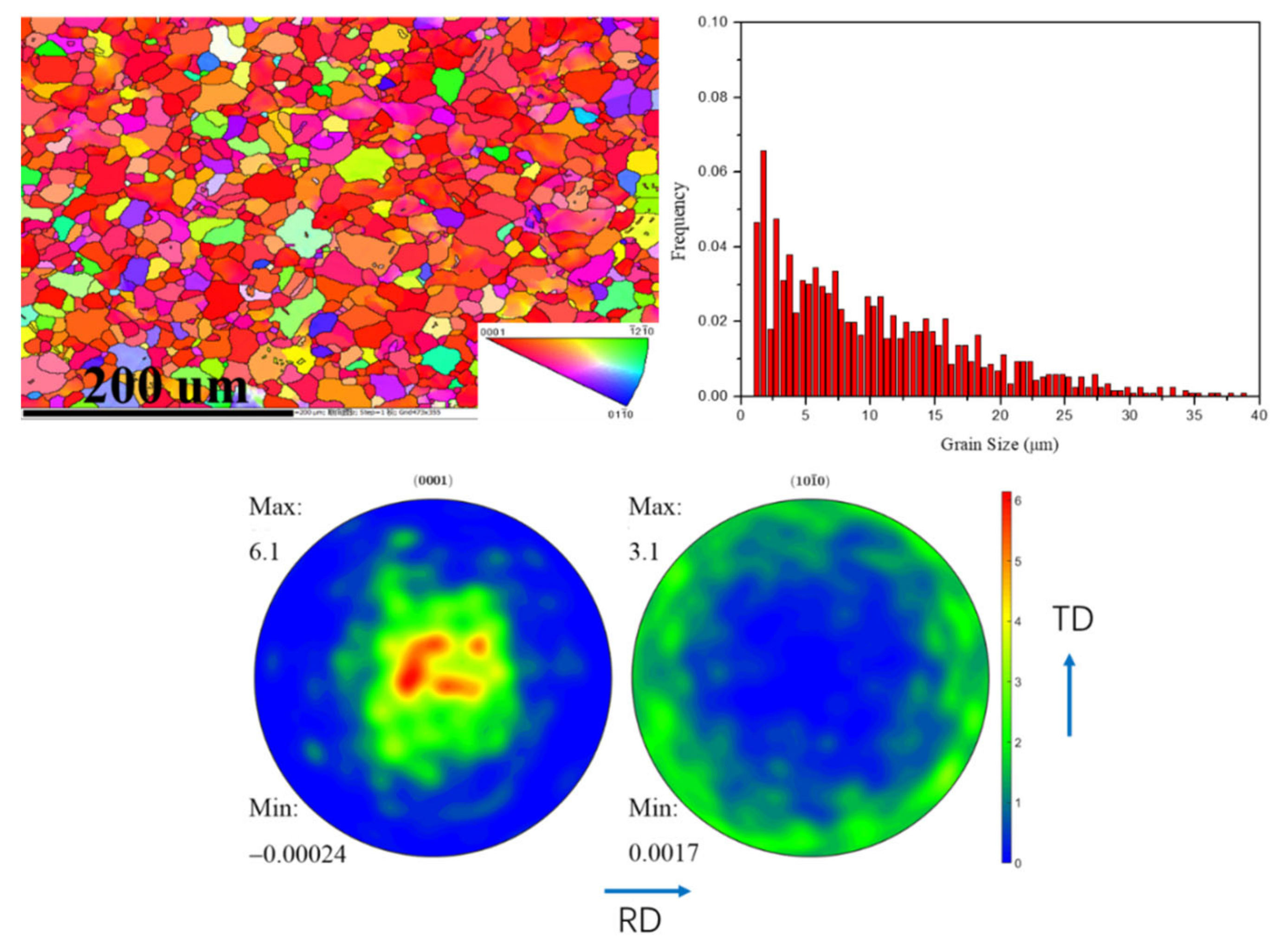
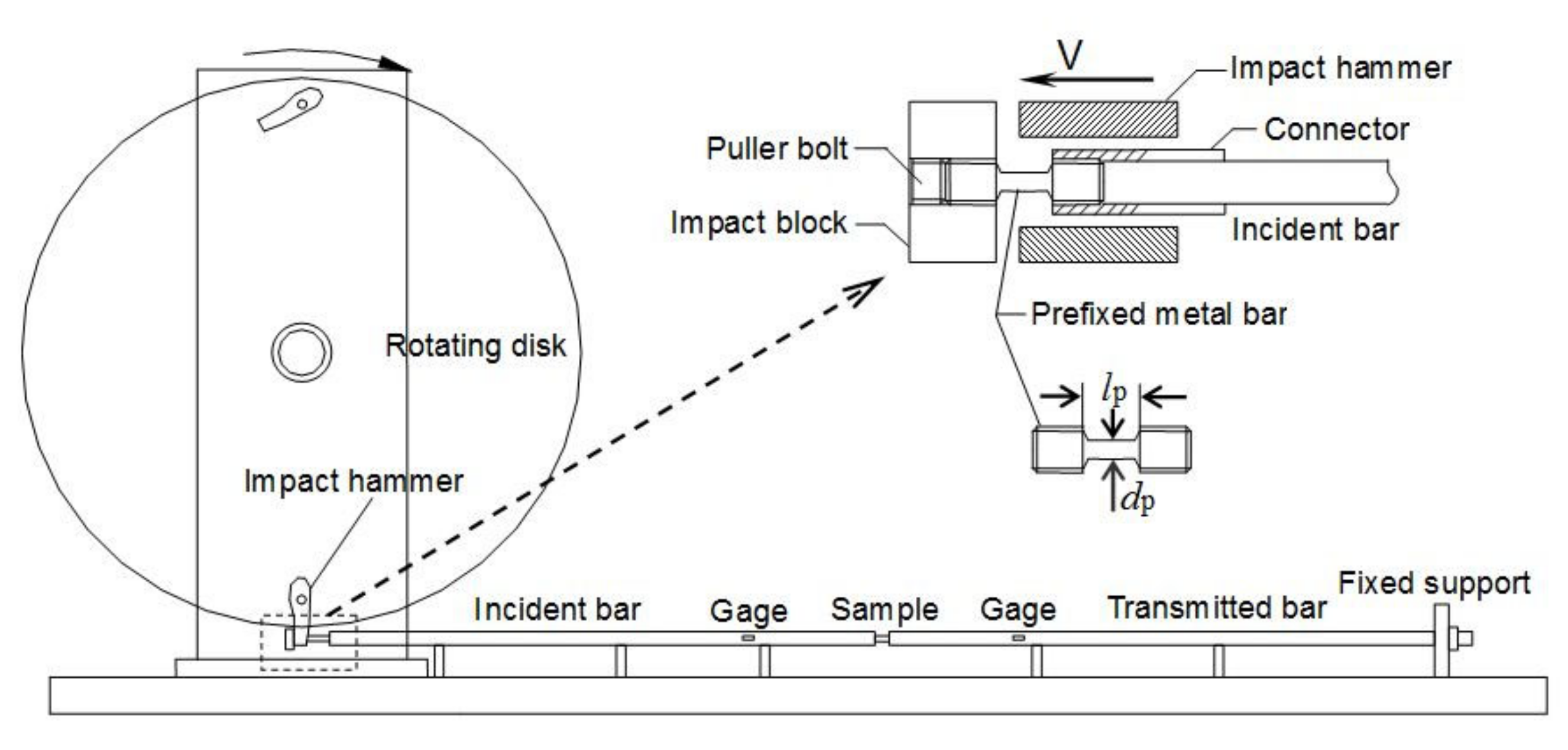

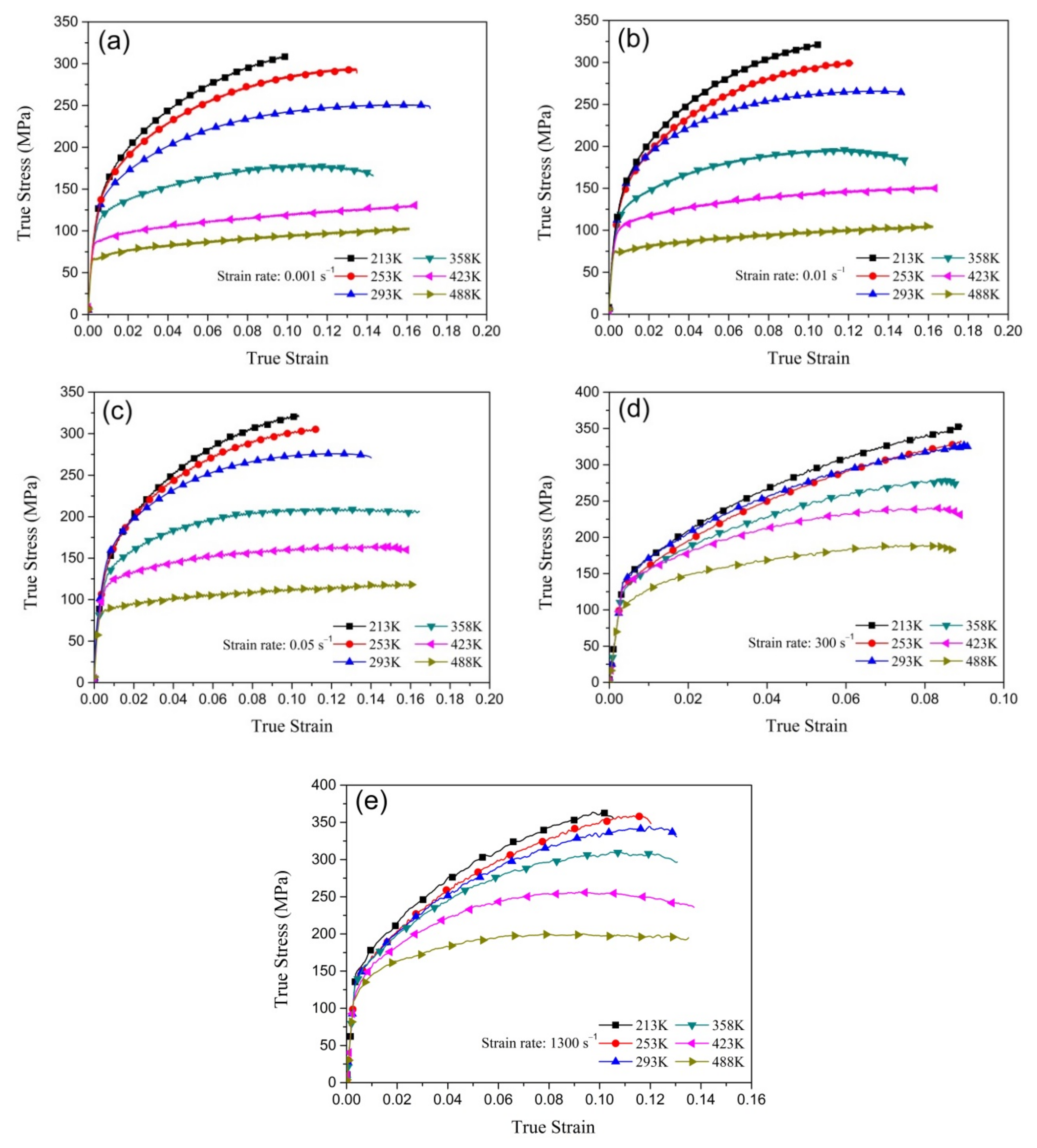


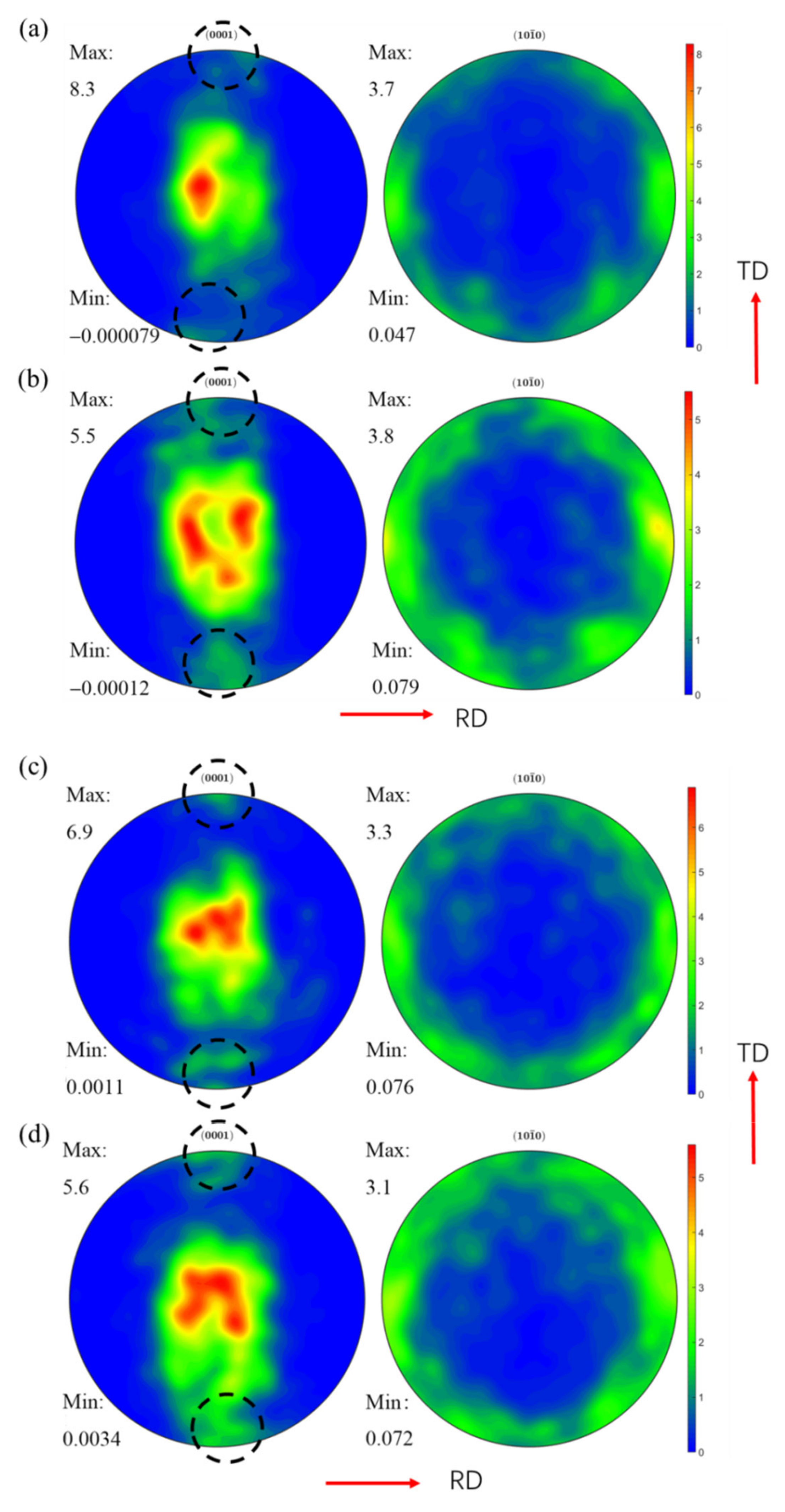
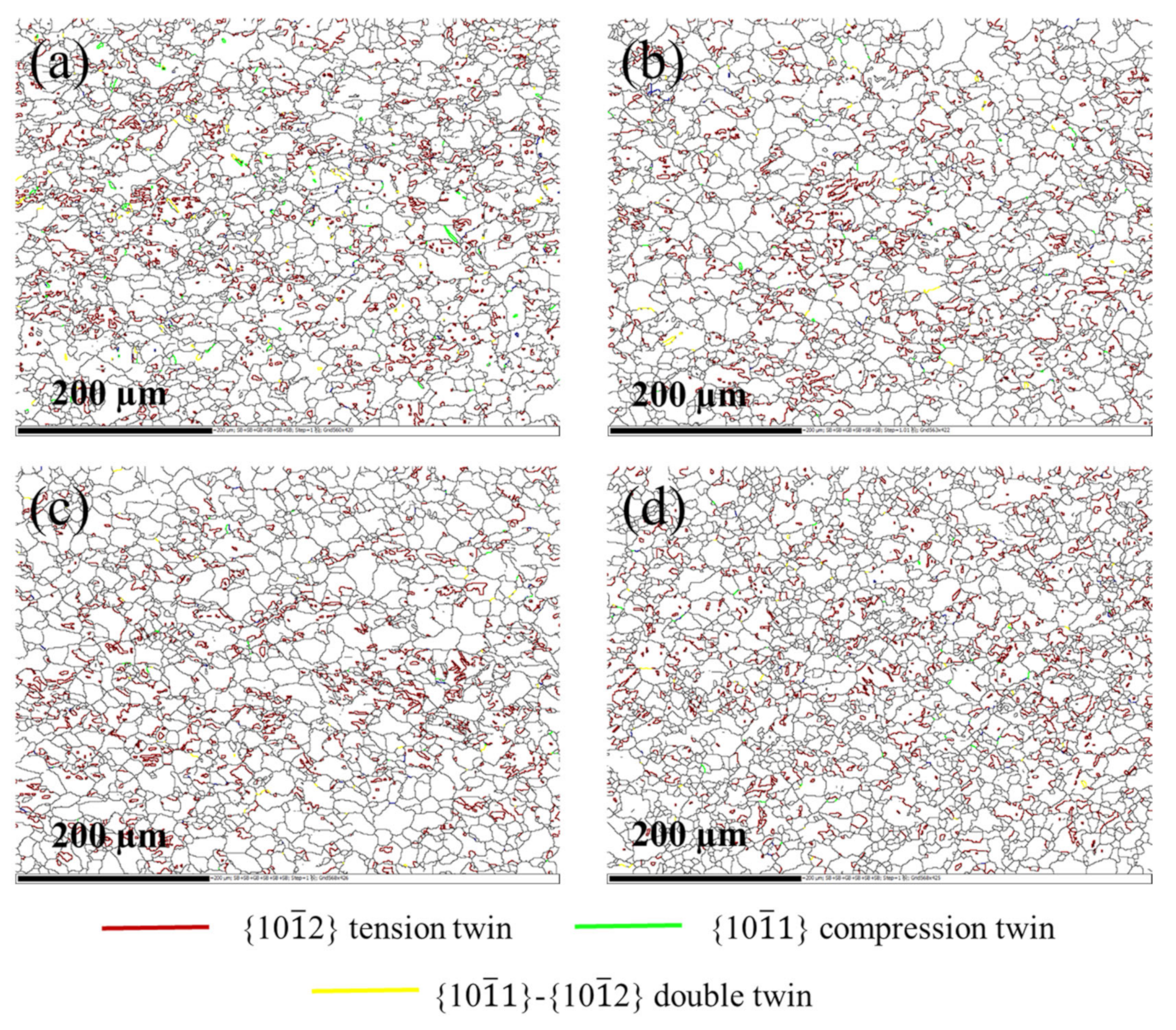
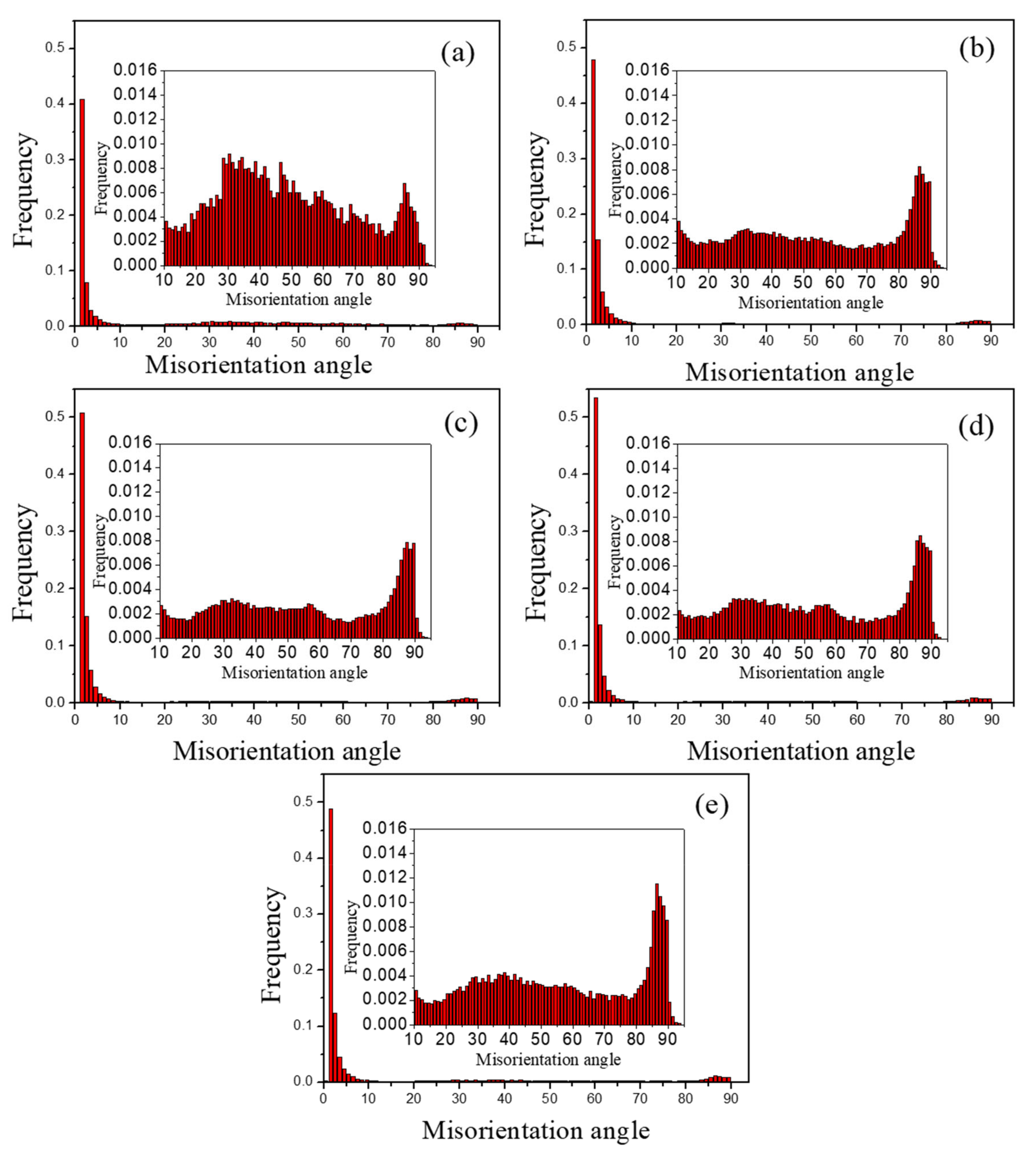

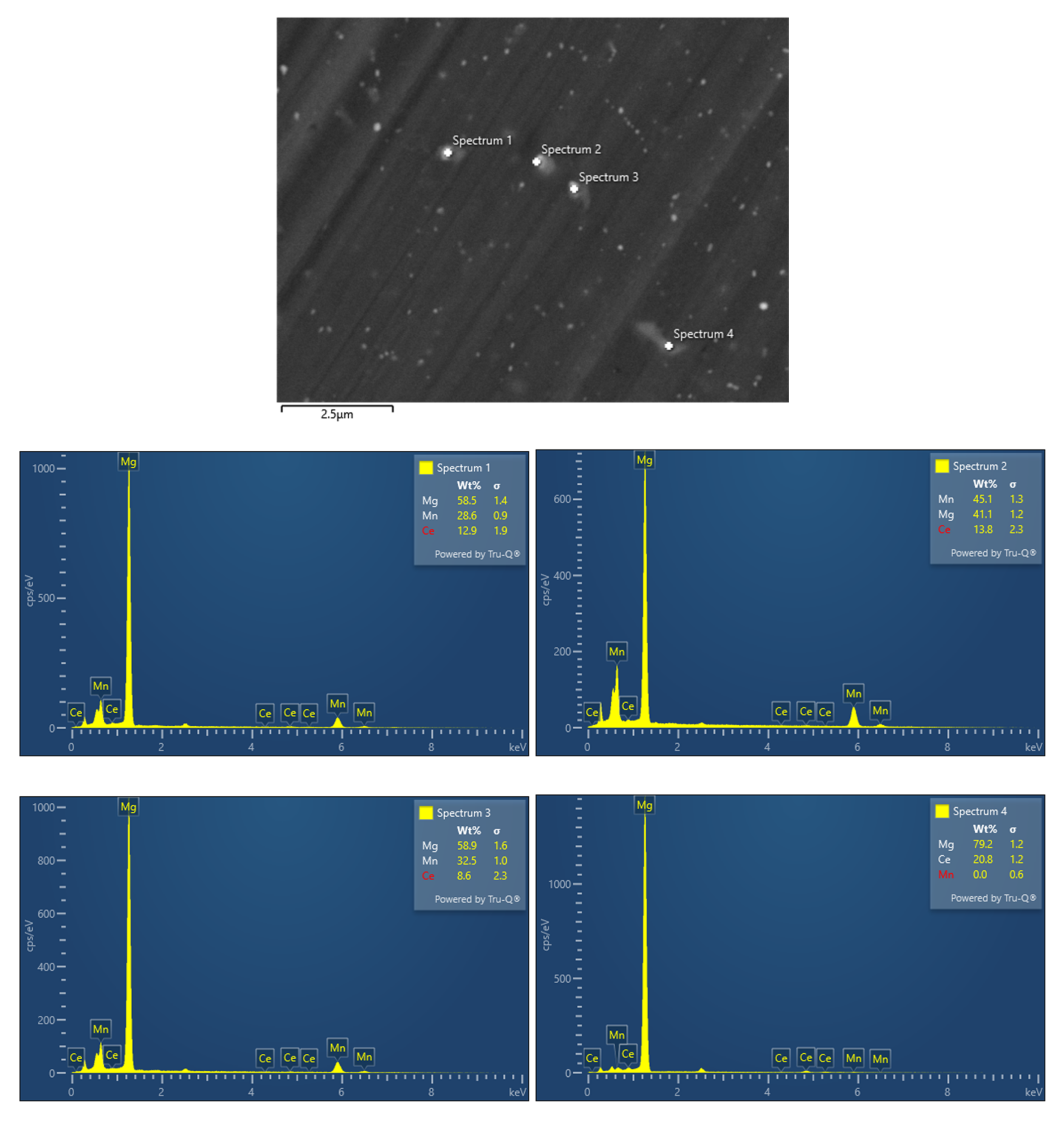
Publisher’s Note: MDPI stays neutral with regard to jurisdictional claims in published maps and institutional affiliations. |
© 2020 by the authors. Licensee MDPI, Basel, Switzerland. This article is an open access article distributed under the terms and conditions of the Creative Commons Attribution (CC BY) license (http://creativecommons.org/licenses/by/4.0/).
Share and Cite
Wang, J.; Wang, Y.; Li, Z. Dynamic Tension Deformation of Rare-Earth Containing Mg-1.9Mn-0.3Ce Alloy Sheet along the Rolling Direction at Various Temperatures. Metals 2020, 10, 1473. https://doi.org/10.3390/met10111473
Wang J, Wang Y, Li Z. Dynamic Tension Deformation of Rare-Earth Containing Mg-1.9Mn-0.3Ce Alloy Sheet along the Rolling Direction at Various Temperatures. Metals. 2020; 10(11):1473. https://doi.org/10.3390/met10111473
Chicago/Turabian StyleWang, Jin, Yang Wang, and Ziran Li. 2020. "Dynamic Tension Deformation of Rare-Earth Containing Mg-1.9Mn-0.3Ce Alloy Sheet along the Rolling Direction at Various Temperatures" Metals 10, no. 11: 1473. https://doi.org/10.3390/met10111473
APA StyleWang, J., Wang, Y., & Li, Z. (2020). Dynamic Tension Deformation of Rare-Earth Containing Mg-1.9Mn-0.3Ce Alloy Sheet along the Rolling Direction at Various Temperatures. Metals, 10(11), 1473. https://doi.org/10.3390/met10111473



